Long road to London 2012
While a number of selections for Skandia Team GBR have now been made, a question mark still remains over who will get the London 2012 slot among the last few – the 470 Men, the Laser Radial and the 49er.
Each of these has their own unique set of reasons why selection remains undecided. In the 49er the situation has been a little like the Finn class, where there have been some a lot of talent teams gunning for the slot, however there has not been the consistency of Ben Ainslie, Giles Scott and Ed Wright.
Over this last cycle Britain’s leading 49er teams have had the habit of getting into the medal race (ie in the top 10) but not reaching the podium. Medals have been won, but rarely by the same team more than once. For example the young talented John Pink/Rick Peacock won in Miami this year; Chris Draper and Pete Greenhalgh looked good in 2010, winning the Europeans and coming second at Princess Sofia; Dylan Fletcher/Alain Sign put in the best performance at the class’ last World Championship in Freeport, Bahamas in January 2010; Paul Brotherton and Mark Asquith were second in Miami this year and last year won in Hyeres.
In comparison Stevie Morrison and Ben Rhodes, who represented Team GBR in Beijing, podiumed three times in six regattas during 2010 (all bronzes). Their break came when they went into Skandia Sail for Gold this year on a high immediately coming from a win at the Delta Lloyd Regatta. This in turn earned them the berth at August’s Olympic test event in Weymouth where they came home a close, but not close enough, fourth.
According to Morrison they have learned their lesson from Beijing in 2008. Going into that regatta they were the favourites, but failed to perform on the day, returning home a disappointing ninth. As Morrison says: “In 2007-2008 we delivered a lot. We were like TNT! But we didn’t deliver it at the right place on the right day, which was ultimately in Beijing. No one remembers that we got a bronze medal, a gold medal and a silver medal at three World Championships in row and won the European championships and won the Pre-Olympics - that was all irrelevant. We want to win an Olympic Gold medal – that is what you are remembered for.”
Morrison admits that for the last couple of years they have lacked speed. However earlier this summer they went on the initiative to address this. While Morrison says there is not a great deal to choose between the Ovington and McKay-built 49er hulls, it is the new rigs where most gains are to be made. Morrison likes the new rig as it is much more powerful, the 49er now fully powered up in just 7-8 knots of breeze.
“It has taken a lot of understanding with the square top rig, the carbon mast and how you use that is different,” says Morrison. “The Aussie guys are making massive changes, they are really pulling their mast around. We are more touchy feely with it and that is something we learned from them.”
He continues: “Ben Ainslie’s [Finn] mast is probably made to within a 0.5mm tolerance. Ours is off the shelf. It has been something we’ve struggled with. Ben [Rhodes] and I have a tendency to blame ourselves and our technique before we blame the kit. And you get down to Palma and you have only got so much kit and you are there for two months... We have got a good budget, but we haven’t got the budget to be flying masts in from here, there and everywhere.”
The practice within the top 49er teams is to acquire several masts – in Morrison and Rhodes' case six - and then piece together the best parts. “You put them together like Meccano,” says Morrison.
They fitted their new mast on 4 May around the same time as they got a new boat, new rudder and new sails and then spent the short time leading into the Delta Lloyd Regatta, held over the last week in May in Medemblik, getting the new gear up to speed. Fortunately since Hyeres they have enjoyed the assistance of Andrew Simpson and Derek Clark in this.
Morrison also has a considerable knowledge resource of his father, the esteemed dinghy and yacht designer Phil Morrison. However Stevie says his father’s input isn’t as great as you might think. “He’ll tell everyone else! He’ll tell Draper! In 2006 I was putting Teflon on the bottom of the boat and Draper was like ‘what are you doing that for? You dad says its rubbish’. Well, cheers for telling me! He sits on the fence a lot more than you would think. With me he is dad, not Phil Morrison. Derek is a good friend of his, but Derek will take a more useful role of not sitting on the fence.”
But with their victory in the big breeze event in Holland, clearly they are on the right track with their new equipment. “We had an awful lot of work to do so we weren’t regatta-prepared. The boat was ready about three hours before we went to Holland! It was lastminute.com. But our understanding is growing. It has been a real test of Ben and I and we are a lot more savvy and we have got a really good benchmark now. We are not a mile off the speed the top guys have. We are moving in the right direction. We have been doing this for eight years and small differences are hard to come by. But now we have made a fairly major difference with our boat.”
In terms of sailing technique over the current Olympic cycle, Morrision says there have been continued improvements in the skill with which the top teams can handle the twitchy skiff. “You always used to associate a 20 knot 49er race with total carnage, like that medal race in China, although that was exceptional in terms of the sea state. When you get to a gold fleet race in 20 knots, or even, more now you wouldn’t expect too many people to be swimming.”
At present Australians Nathan Outteridge and Iain Jensen are the force to be reckoned with in the 49er. If you look at their results since May 2009 their results put even Ben Ainslie’s to shame. They have only been off the podium once in this time and when they have been on the podium they have never been lower than silver. Quite a track record.
"We beat Nathan in Holland and we have beaten him in the past several times, so I don’t hold any fear of him or give him any God-like status,” says Morrison. “He is a guy I respect and has a real talent, but we have beaten him a lot of times. He has beaten us more recently and we beat him more at the start.”
Fortunately last winter the British duo were able to do some training with the Aussie pace setters down on Outteridge’s home turf of Lake Macquarie. “It was a fantastic experience. It is pretty easy to see why he is quite good, because there is nothing else to do there!” recounts Morrison. “His technique and the Kiwi guys’ technique downwind - they sail the boat beautifully.”
On Lake Macquarie they also tried some of the unorthodox training Aussie coach Victor Kovalenko is known for. During their stint training in Australia, there were occasions when all the crews swapped positions - with the obvious benefits of learning their partner's role, thereby improving communication. Another time they had to sail a special course involving crossing the start and finish lines backwards and doing a 360degree turn at the top mark. “It was fun - all about the skill set, but it is very different to how we usually train as a squad. It was not going out start-start-start-start and then lap-lap-lap-lap,” says Morrison.
There was also the psychological aspect to the training in Australia – it was actually good fun. As Morrison says: “We have been doing this for a long time - I am 32, Ben is 30 - and it reminds you why you do it. You are trying to be the best sailors in the world and it is easy to get dragged down and get miserable, whereas it should be fun.”
Morrison observes that Outteridge never seems stressed. “If you look at how relaxed the guy is. He cruises around the world, he has a pretty comfortable life, he is confident with his kit and his settings - that is a good frame of mind to be in. Possibly 5% of that gain is feeling confidence about yourself. Confidence breeds confidence. When we had that run in 2007, it came easy. We were confident, we didn’t need to think much. So the mental part of it is a big thing. We have not been in that frame of mind although we are slightly more in it now.”
Since Skandia Sail for Gold, the British 49er squad has changed. The old timers have moved on – for example Chris Draper and Pete Greenhalgh are now sailing AC45s – leaving Morrison/Rhodes, Pink/Peacock, Fletcher/Sign while Dave Evans and Ed Powys remain in the Development Squad. “It is very much a younger look squad and the RYA are looking to the future,” says Morrison. “Although I still quite like the look of Rio...”
Significantly Paul Brotherton, who helped Sarah Ayton’s team to Yngling Gold in Beijing, has stepped out of his helmsman’s role and is now coaching the British 49er squad in place of Ian Barker and Harvey Hillary.
“Paul’s switch to coaching is really great,” says Morrison. “We have had involvement with him since 2003, admittedly only for a day or so a year up until when he started sailing again. In terms of articulating the technique of 49er sailing, he’s the best coach I’ve worked with.
“Paul has come in and really shaken things up in a very positive way and shown us why we haven’t been making the improvements we should have: fundamental things like team work and communication and wanting to win and not being scared to lose, psychological stuff.
“And enjoyment. When Ben and I did very well [ie in 2007] we were were Jack the Lad and his mate, but the more you go on, the more professional you feel you should be. So it is about being professional, but keeping it fun. I don’t think we kept it fun enough.”
It is also about being yourself. “Ben [Ainslie], Iain [Percy], Bart [Andrew Simpson] – we can never be them. We have got to be Stevie and Ben and we did a good job of that to start with and I think we perhaps tried to look at where other people are good, like Chris Draper’s organisation, etc. and tried to do that. Whereas we are us and we were very good as us. So Paul is trying to instill that in us a little bit again.”
Since the test event in August, Morrison and Rhodes have had some time out. Rhodes has had a problem with one of his toes and had an operation to fix this over last winter and has since had another. “He had to have some bone flushed out from within there,” says Morrison. “His foot still hurt and now, although it is close to the Worlds, our whole schedule is based around the Olympics and the only chance for Ben to be 100% fit for the Olympics is to miss six weeks now in the lead-up to the Worlds. But I think it is fine for our approach to the Worlds. We need a break and you have to get that fire in your belly.”
From here the results at the ISAF Sailing World Championships in Perth over the first two weeks in December will be crucial as it seems likely that a podium result there will secure Morrison and Rhodes berth in Weymouth next year. If not or one of their rivals in the British squad beat them, then it is up to the Olympic Selection Committee decide how a decision will be made for the British 49er sailors.
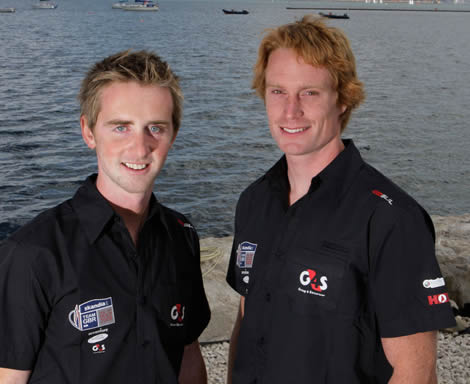

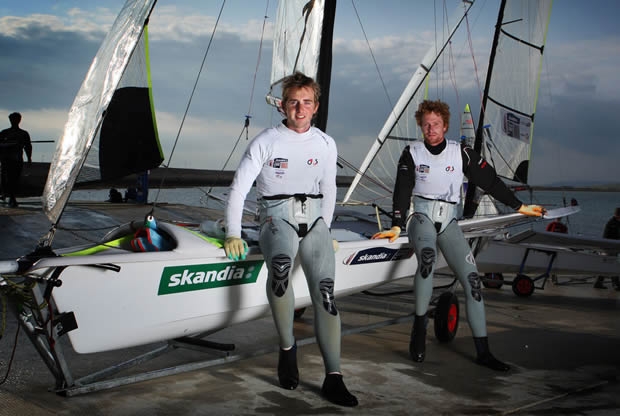
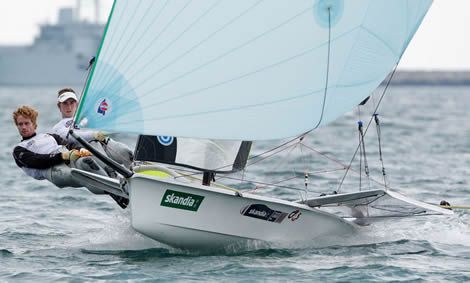
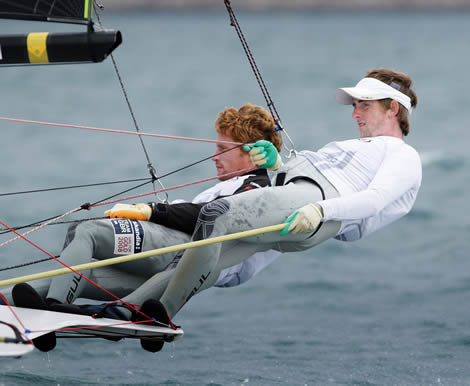
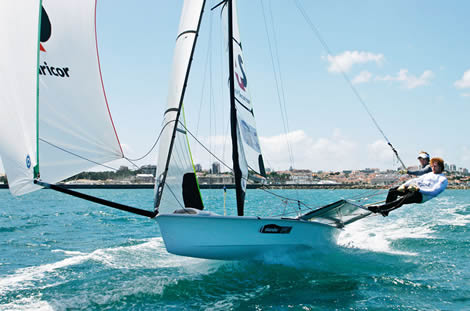








Latest Comments
Add a comment - Members log in